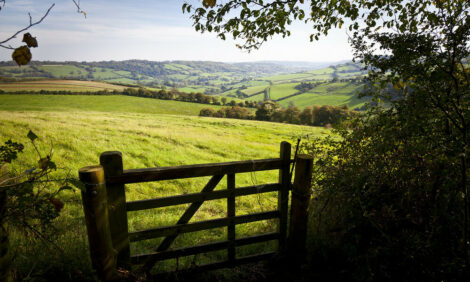



UK midge season has extended due to climate change
A team of scientists at The Pirbright Institute, Rothamsted Research, The Centre for Ecology and Hydrology and the Met Office have provided the first evidence that the UK midge season has extended over the last 40 years due to climate change.The findings could help scientists to make better predictions about how the spread of livestock diseases that are transmitted by midges, such as bluetongue, might alter in response to future climate change.
Published in the Journal of Applied Ecology, their study looked at the activity of midges at two sites in the UK; Starcross, Devon and Preston, Lancashire. These sites are home to traps of the Rothamsted Insect Survey, the longest running flying insect survey in the world that has monitored populations since the 1960s. The team analysed an impressive 2,867 insect collections that spanned over a 40-year timescale and contained over 150,000 midges.
From this data they found that the number of days midges were active varied between the two sites. Despite the similar change in average temperature across the sites, Starcross saw no significant change in midge prevalence, whereas at the Preston site the midges had extended their yearly activity period by 40 days since the 1980s.
“At first we thought this large difference in response might be due to many other local factors that can affect midge populations, such as abundance of their food source (like cattle) and changes in land use”, said Dr Chris Sanders, who lead the study at Pirbright. “But we found that these factors either remained consistent for both sites over the course of this study, or the changes would have been neutral in terms of their effects on the midge population, indicating that there was something else at play”.
One of the key requirements for a thriving midge population is soil that holds enough moisture to support the growth of their larvae. The team therefore examined rainfall and earth composition at each site. Starcross observed no significant change in rainfall and has a sandy soil that is not very good at holding water. However, the Preston site saw an increase in rain on clay loam soil which suggested the moisture was retained at high enough levels for midges to increase in numbers and therefore be collected earlier and later in the year.
This extended activity period can have severe consequences for the health of animals that are susceptible to bluetongue, as it increases the time at which they are at risk of contracting the disease. A reduction in the time when adult midges are absent during the colder months means the likelihood that the virus will be able to over-winter and emerge the following spring is increased. Animal movement restrictions imposed during a bluetongue outbreak may be lifted when midge activity and therefore risk of disease transmission is negligible. The longer midge season would reduce the available time for the trade and movement of these animals, having a significant impact on these industries.
This study provides weight to anecdotal evidence that warmer weather is extending the active period of midges, but also emphasises the importance of taking local factors into account when identifying how climate change may alter midge activity. The differences seen between the Preston and Starcross sites highlight the challenge scientists face when making broad estimations about the effect of climate change on insect populations and the viruses they spread.


